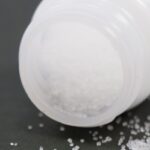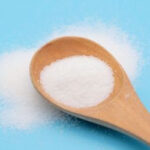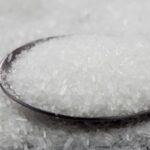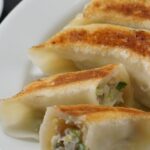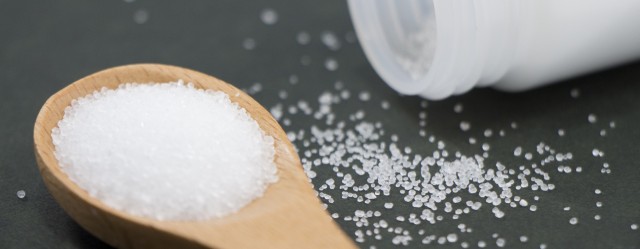
On March 1, 2022, the Consumer Affairs Agency (CAA) released the revised “the guideline of additive labeling for use of ‘non-use’”(draft) after inviting comments (public comments) at the discussion about the guidelines of additive labeling for use of “non-use”. Some points have been changed since the draft proposal for the request for comments, so we would like to summarize them here.
Contents of the received comments
The draft was opened for comment on December 22, 2021, and closed on January 21, 2022. The total number of comments received was 758. A breakdown of the comments is also available in the document (“comments in Public Comments”). The category with the most comments was “Types (376 comments),” followed by “overall guidelines (208 comments) of the categories of “overall guidelines,” “scope of application of guidelines,” “Types,” “dissemination/enlightenment,” “review period of the labeling,” and “others”. Among “Types”, the one with the most comments was “Type 5: Labeling on foods with ingredients having same function / similar function (68 comments)”, followed by “Type 10: Excessive claims (50 comments),” and then “Type 4: Labeling on foods with food additives having same function / similar function (47 comments) and then “Type 2: Labeling terms not stipulated in Food Labeling Standards (46 comments)”.
Major changes in the revised draft after inviting comments
The discussion group has published a document titled “Revised Version of the Guidelines with strikethrough” which clearly shows the revisions made to the draft guidelines at the time of the request for comments. The following is an excerpt of the changes that may have an impact on actual label creation work.
(Among text in red, underlines were newly added and cross-out text was deleted.)
| Revision after inviting comments | |
|---|---|
| Background and purpose | This guideline can be used by food-related businesses, etc. to conduct self-inspection to determine whether or not they are subject to prohibited labeling items stipulated in Article 9 of the Food Labeling Standards. |
| Type 1: Mere “not added”; labeling | e.g. Labeling merely “no added” without indicating what is not added. |
| Type 2: Labeling terms not stipulated in Food Labeling Standards | e.g. Terms such as “artificial”, “synthetic”, “chemical |
| Type 3: Labeling on foods with use of additives not permitted by the regulation | – (Minor corrections only) |
| Type 4: Labeling on foods with food additives having same function / similar function | – When the difference between a food additive with non-use label and the other food additives with the same or similar function contained in the food is not clear from the labeling. e.g. 2: Labeling |
| Type 5: Labeling on foods with ingredients having same function / similar function | e.g. 1 Labeling “No |
| Type 6: Labeling associated with health and safety | – (Minor corrections only) |
| Type 7: Labeling associated with something other than health and safety | e.g. 2: Without mentioning “after opening the package,” the label states, “No preservatives used, so please consume as soon as possible. |
| Type 8: Labeling on foods with use of additives not expected | e.g. 1: A food product of the same type that is generally free of colouring and has the original colouring of the food is labeled as “No colouring used”;. |
| Type 9: Labeling on food with a processing aid or carry-over (or cannot be confirmed not to be used) | – (Minor corrections only) |
| Type 10: Excessive claims | e.g. 1: Labeling “non-use of XX”; in excessively prominent colour on many places of a package of a product |
| Review of labeling based on the guidelines | – During the next two years (until the end of March 2024), it is required to review the labeling |
In Type 4 and 5, which have most comments as public comments, and Type 10 of “Views on comments”, which has an impact on these types, the following answers were often used. Since it is expected to be difficult to list specific examples such as “XX case falls under Type”, self-inspection will be left to the judgment of each business operator.
“Since the accuracy of labeling is considered to be important in consumers’ product selection, this guideline provides an interpretation of prohibited labeling items as stipulated in Article 9 of Food Labeling Standards, in order to prevent consumers from selecting products based on misleading or contradictory labeling regarding the non-use of food additives.”
“Article 9 of Food Labeling Standards does not give any stipulations in detail what kind of labeling provides accurate information to consumers, and what kind of labeling misleads consumers. Since the types of non-use labeling of food additives on food products are diverse, it is difficult to enumerate every example.”
“This guideline is newly formulated as an indicator to determine whether or not a label on product falls under prohibited labeling items stipulated in Article 9 of Food Labeling Standards.”
“In addition, whether or not the labeling of non-use of food additives falls under the prohibited labeling items stipulated in Article 9 of Food Labeling Standards shall be judged not only based on the case that each Type is considered to have a high possibility of falling under the prohibition of labeling, but also as a whole on a case-by-case basis based on the nature of the product, knowledge level of general consumers, actual conditions of transactions, labeling methods, and contents subject to labeling.”
Future schedules
The official guidelines are expected to be announced by March 2022. After that, labeling is expected to be reviewed by the end of March 2024. It is recommended that those who handle products with the relevant labeling read through the draft guidelines and other materials of the discussion in advance.
Reference
Share/Like/Follow:
Newsletter Signup
We issue monthly e-newsletters, which provide you with the latest updates on food labeling/regulations in Japan.
If you want to make sure to not miss any issue, please click below.
Related Service
Research Services on Ingredients & Food Labeling -For the Japanese Market-
We verify the conformity of ingredients and additives with the standards for use in Japan based on specifications such as formulation lists. We also verify the conformity of the proposed labeling of ingredient names, nutrients, etc. with the labeling standards based on specifications such as formulation lists.

Label bank Co., Ltd. CEO (Founder)
Born in Japan. Working on solving various issues related to food labeling operations. Also regularly gives lectures for various organizations in Japan.
Co-author of ‘Latest edition: Guide book Food Labeling Law and related business practical points – from scratch (Japanese version only)’ (DAI-ICHI HOKI CO., LTD/2019).


